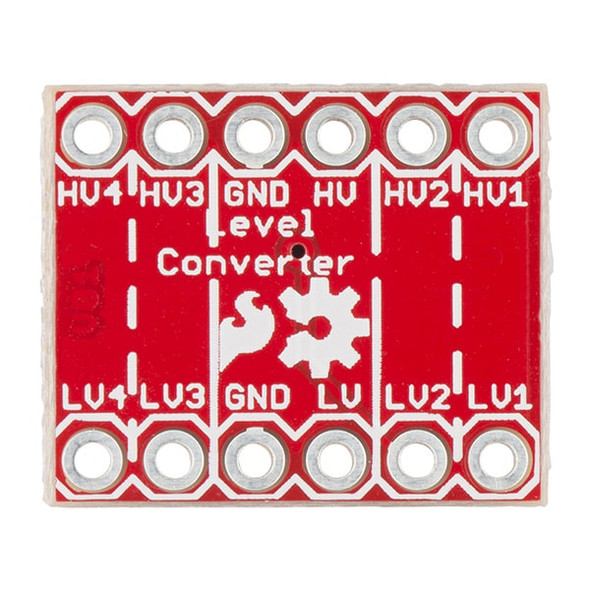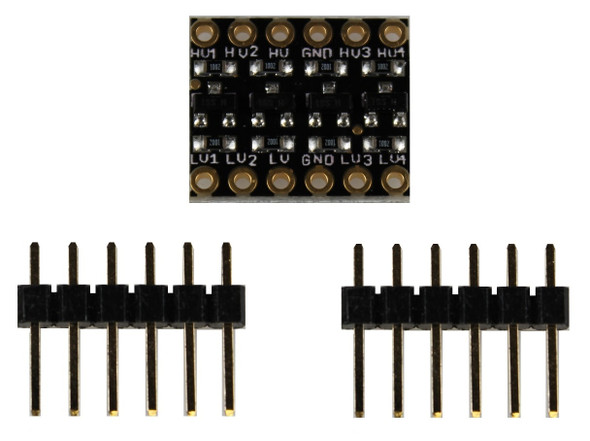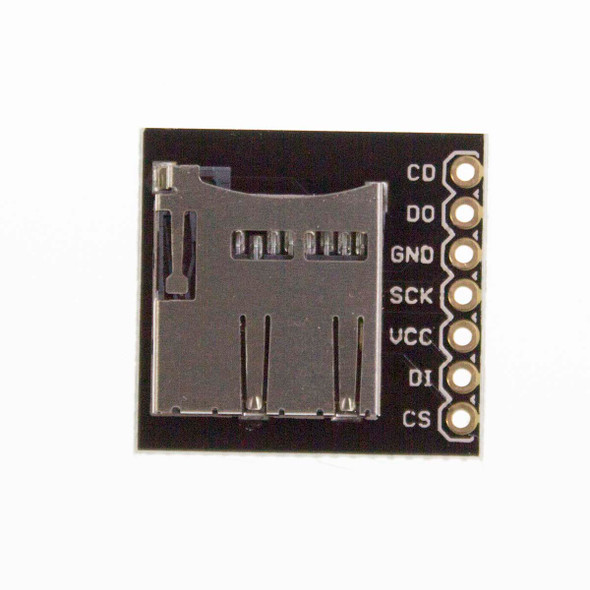
Breakout Boards
What is a breakout board?

The purpose of a breakout board is that it takes an electrical component, like a small sensor, and makes it easy to connect this to your Arduino, Raspberry Pi, or whatever platform you are using. Breakout boards are designed to simplify the process of prototyping with different components in your latest electronics project.
The component being connected is usually an integrated circuit (IC) – a small computer chip – which has a number of “pins” on them. These act as the connections between the chip and the rest of the system such as for power supply, ground or input and outputs. In the past ICs were large enough that you could drill a hole in the circuit board and use this to solder in a “through hole” pin which can easily be used with solderless breadboards. Over time the size of electrical components shrunk to the point were it is not practical to drill a hole in the circuit board – this has led to the rise of surface mount devices (SMDs). The ICs in these devices can no longer be used directly with solderless breadboards – breakout boards “break out” the conductors from the SMD onto a printed circuit board which can be easily be clipped into a breadboard again.
A comparable product is an Arduino shield which also allows simplifies the process of connecting new components to the main development platform. One advantage of breakout boards are that they tend to be smaller with the printed circuit board often being of a similar size to the IC. The main benefit is that breakout boards are not designed for use with any particular platform and are compatible with most micro-controller development boards – giving you more flexibility when you are experimenting with different setups.
- Product
- Qty in Cart
- Quantity
- Price
- Subtotal
-


16 Output I/O Expander Breakout Board - SX1509
Sparkfun
£7.2016 Output I/O Expander Breakout Board - SX1509 - SparkFun BOB-13601 Are you low on I/O? No problem! The SX1509 Breakout is a 16-channel GPIO expander with an I2C interface – that means with just two wires, your microcontroller can interface with 16...£7.20Qty in Cart: 0Price:£7.20Subtotal: -


RJ45 Breakout Board with Mounting Holes (PCB Only)
Proto-PIC
£1.25RJ45 Breakout Board with Mounting Holes (PCB Only) RJ45 Breakout Boards and connectors are mainly used for Ethernet jacks, but they make great general-purpose connectors when you need a lot of conductors. This is a small PCB that brings out the pins of...£1.25Qty in Cart: 0Price:£1.25Subtotal: -


I2C Multiplexer TCA9548A
AdaFruit
£7.50Adafruit 2717 I2C Multiplexer TCA9548A You just found the perfect I2C sensor, and you want to wire up two or three or more of them to your Arduino when you realize "Uh oh, this chip has a fixed I2C address, and from what I know about I2C, you cannot have...£7.50Qty in Cart: 0Price:£7.50Subtotal: -


Voltage-Level Translator - TXB0104 Breakout (BOB-11771)
Sparkfun
£5.00Voltage-Level Translator - TXB0104 Breakout - SparkFun BOB-11771 This breakout board for the Texas Instruments TXB0104 module is a 4-bit bidirectional voltage-level translator with automatic direction sensing.This 4-bit noninverting translator uses two...£5.00Qty in Cart: 0Price:£5.00Subtotal: -


Logic Level Converter Bi-Directional (BOB-12009)
Sparkfun
£3.30Logic Level Converter Bi-Directional - SparkFun BOB-12009 If you’ve ever tried to connect a 3.3V device to a 5V system, you know what a challenge it can be. With this SparkFun bi-directional logic level converter you can safely step down 5V signals...£3.30Qty in Cart: 0Price:£3.30Subtotal: -

Level Translator Breakout - PCA9306 (BOB-15439)
Sparkfun
£5.25Level Translator Breakout - PCA9306 - Sparkfun BOB-15439 There are a couple must-have boards that every engineer and hobbyist should have on their desk, and this PCA9306 dual, bidirectional voltage-level translator breakout is one of them! Because...£5.25Qty in Cart: 0Price:£5.25Subtotal: -

4-channel I2C-safe Bi-directional Logic Level Converter - BSS138
Proto-PIC
£4.004-channel I2C-safe Bi-directional Logic Level Converter - BSS138 This logic level converter is I2C safe and has 4 BSS138 FETs with 10K pullups. It works down to 1.8V on the low side, and up to 10V on the high side.BSS138 Datasheet£4.00Qty in Cart: 0Price:£4.00Subtotal: -


5V Step-Up/Step-Down Voltage Regulator S7V7F5
Pololu
£7.005V Step-Up/Step-Down Voltage Regulator S7V7F5 - Pololu 2119 The S7V7F5 switching step-up/step-down regulator efficiently produces 5 V from input voltages between 2.7 V and 11.8 V. Its ability to convert both higher and lower input voltages makes it...£7.00Qty in Cart: 0Price:£7.00Subtotal: -


RTC DS1307 i2C Real Time Clock Module
Proto-PIC
£5.00RTC DS1307 i2C Real Time Clock Module We sell loads of RTCs but we wanted a super low cost and reliable offering so we found these! Featuring the well-known DS1307 chip it's very simple to get up and running. Simply add a CR1220 (not included due to...£5.00Qty in Cart: 0Price:£5.00Subtotal: -


Level Shifting microSD Breakout (DEV-13743)
Sparkfun
£6.00Level Shifting microSD Breakout - SparkFun DEV-13743 The SparkFun Level Shifting microSD Breakout is quite similar to the SparkFun microSD Transflash Breakout, but with the included level shifting hardware, this board allows you to utilize a microSD card...£6.00Qty in Cart: 0Price:£6.00Subtotal: -


Breakout Board for microSD Transflash
Proto-PIC
£5.40Breakout Board for microSD Transflash Breakout board for the micro SD socket that is not much bigger than your fingernail.Compatible with the SPI interface found on any SD card, this tiny form factor was created for cell phone storage and is perfect for...£5.40Qty in Cart: 0Price:£5.40Subtotal: -


Micro SD card reader module SPI with level shifting
Proto-PIC
£5.00This low cost breakout board supports micro SD and SDHC cards, with on board level shifting from 3.3V to 5V so you can use it with a 5V microcontroller without the need for an external level shifter.This board also comes with right angled headers pre...£5.00Qty in Cart: 0Price:£5.00Subtotal:
